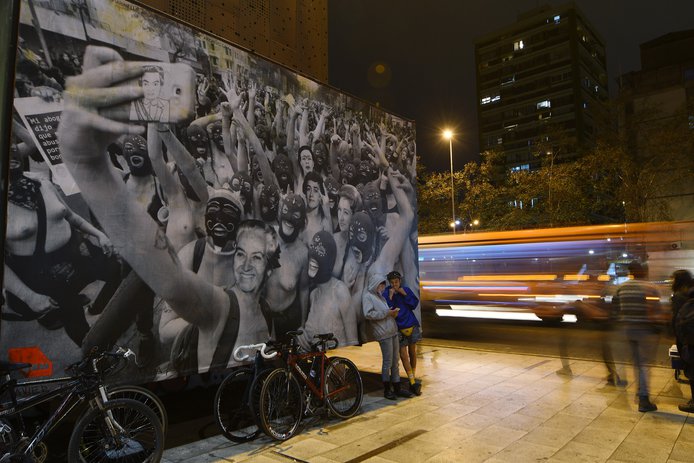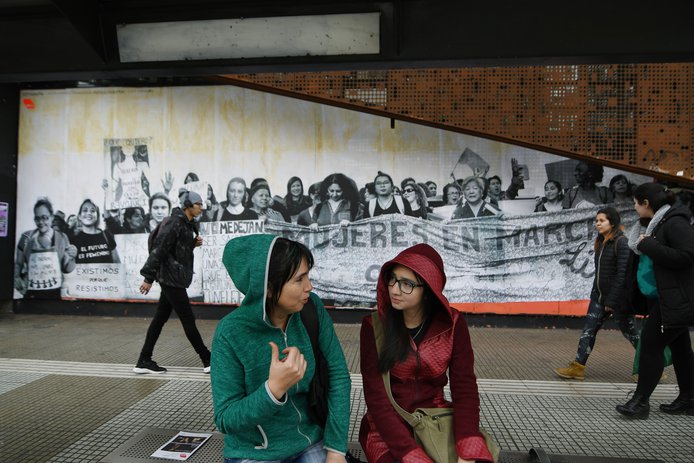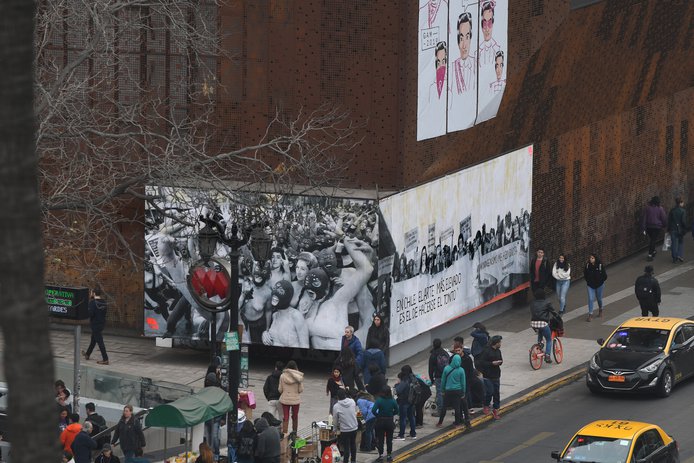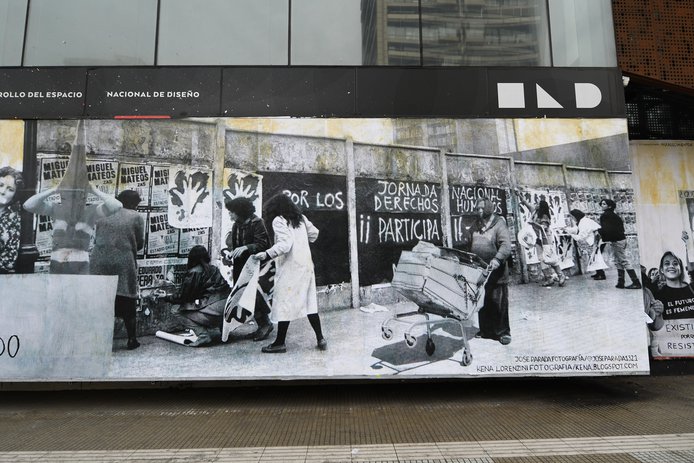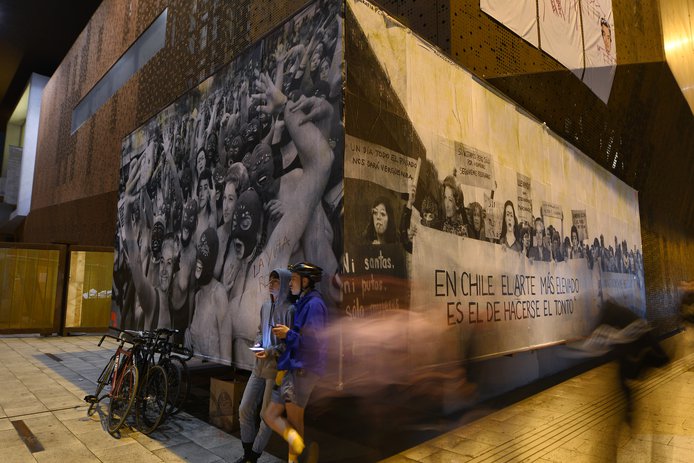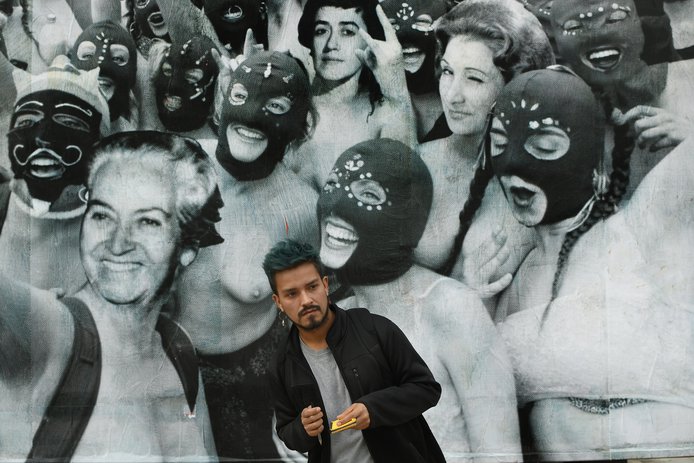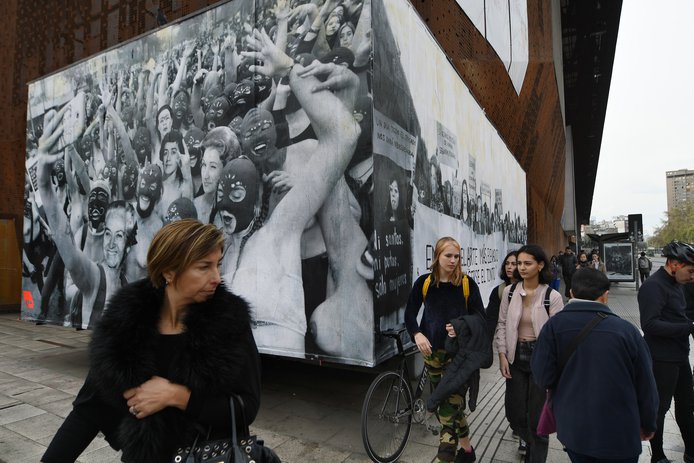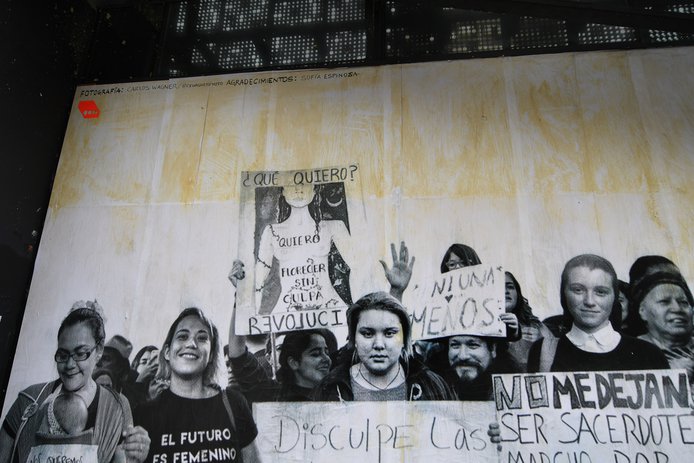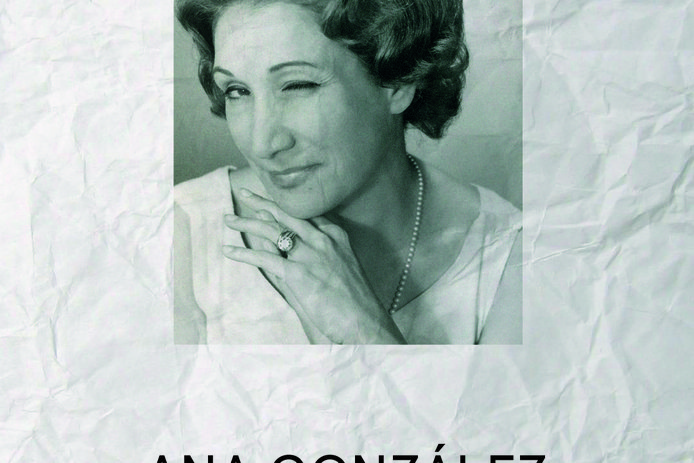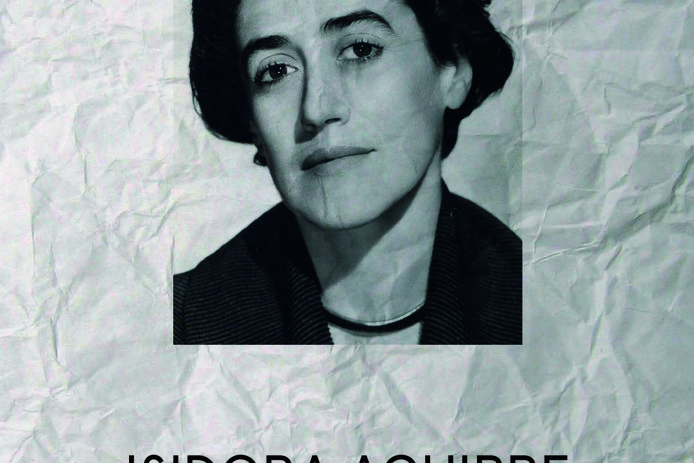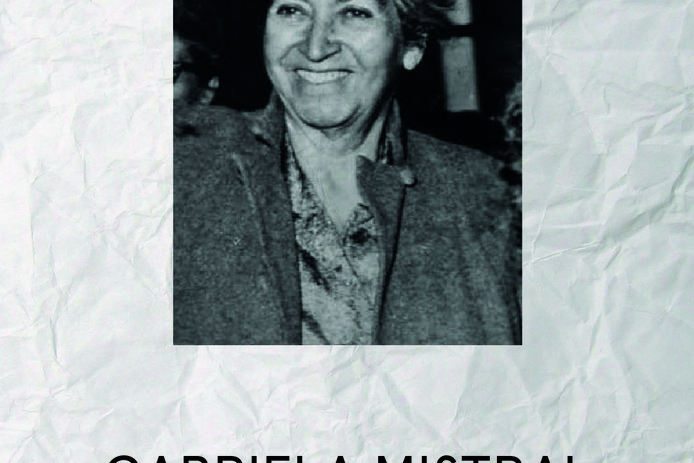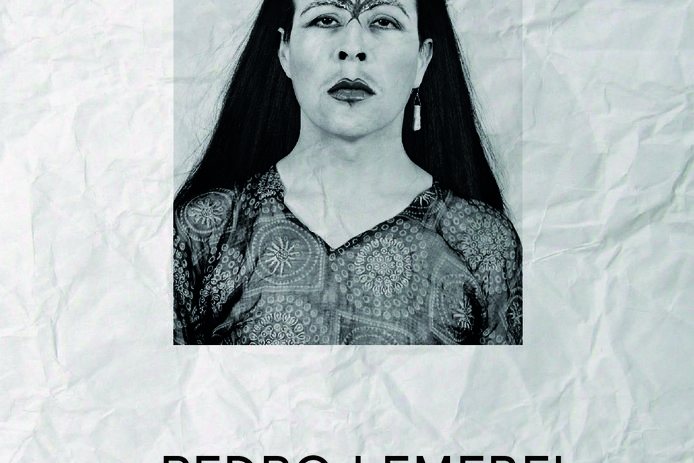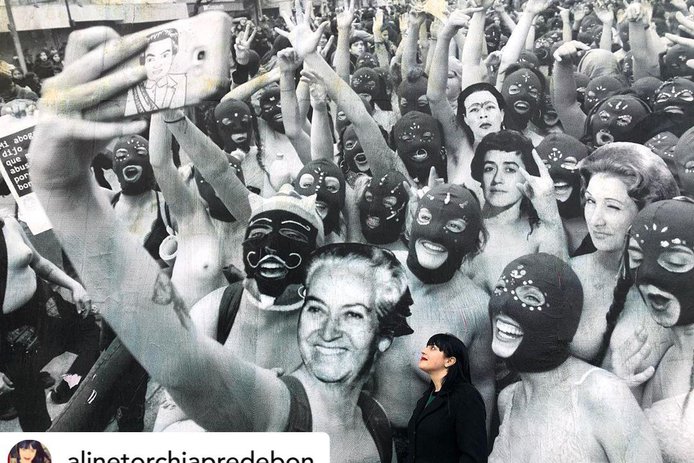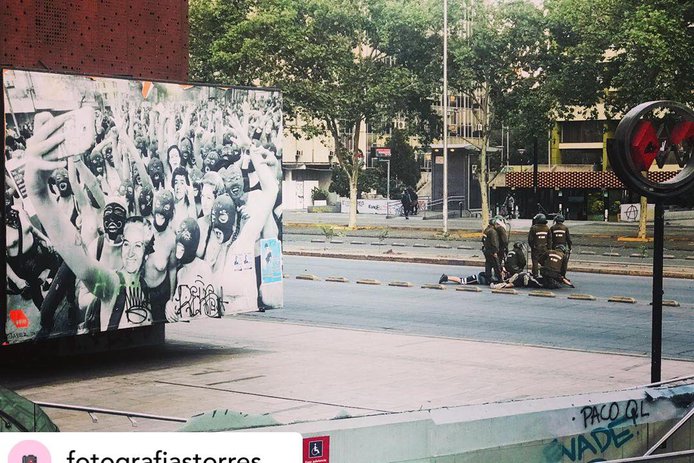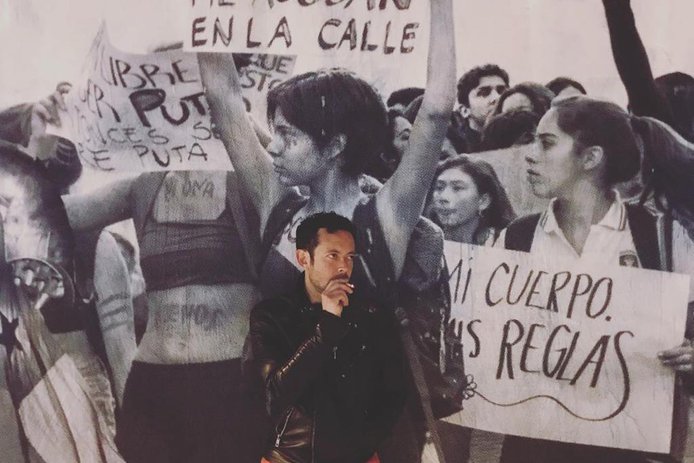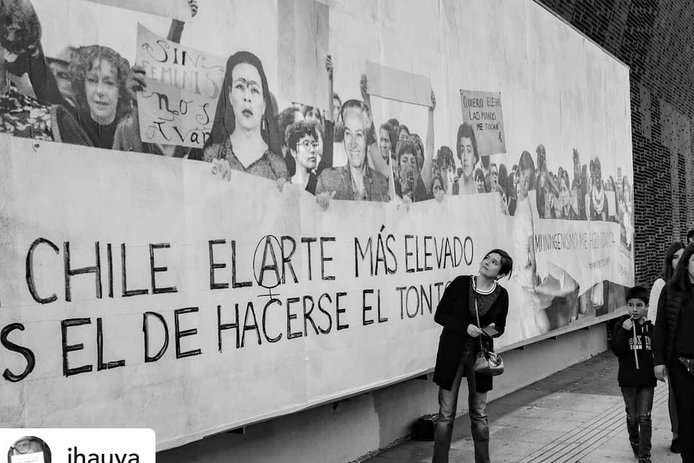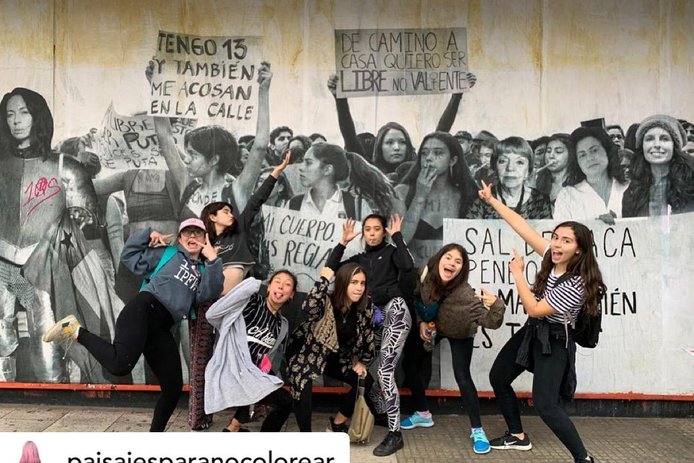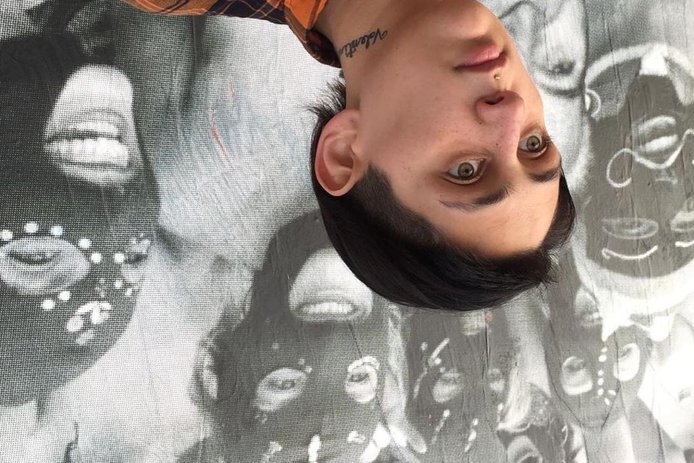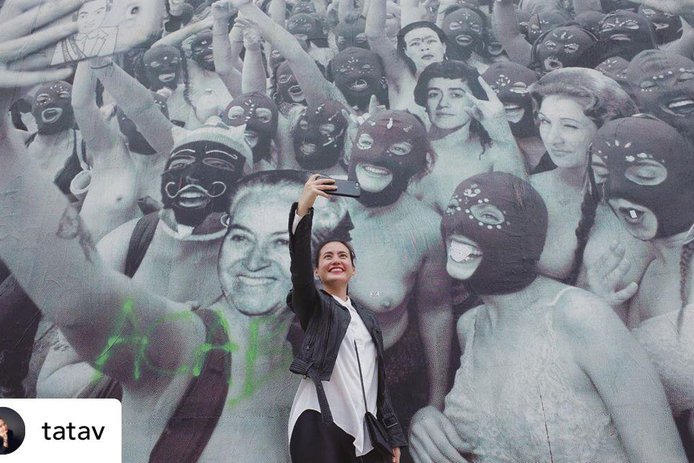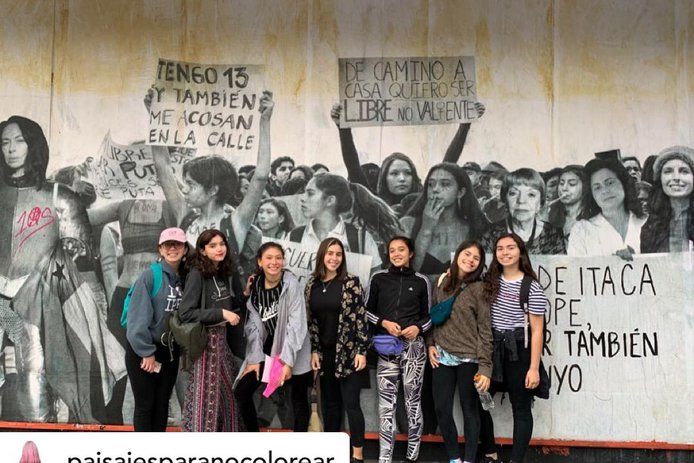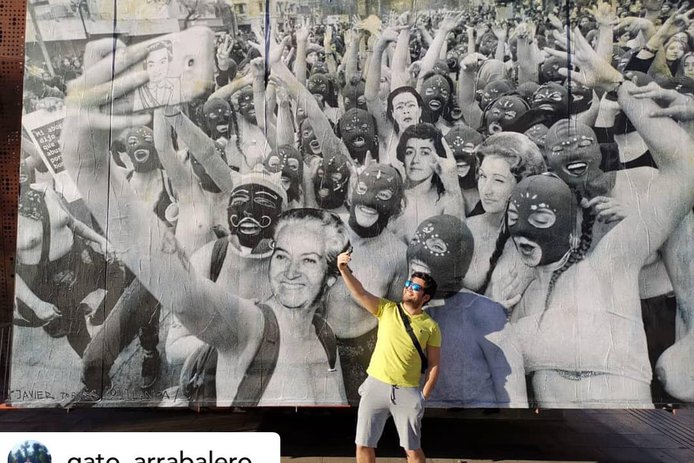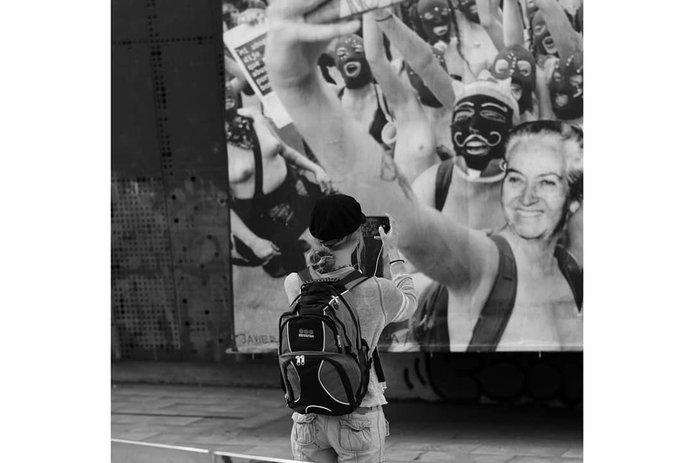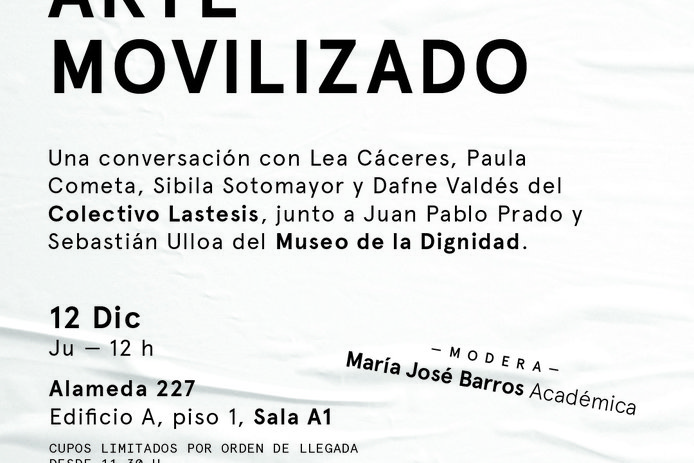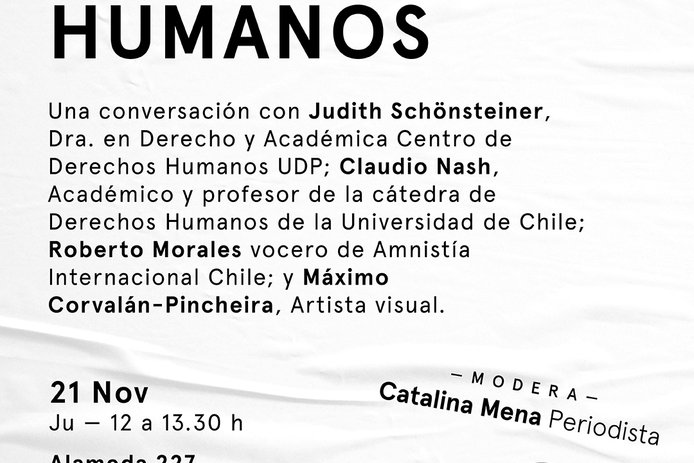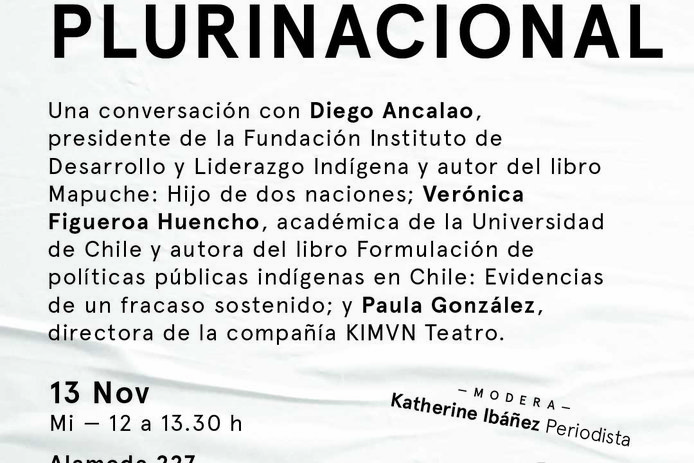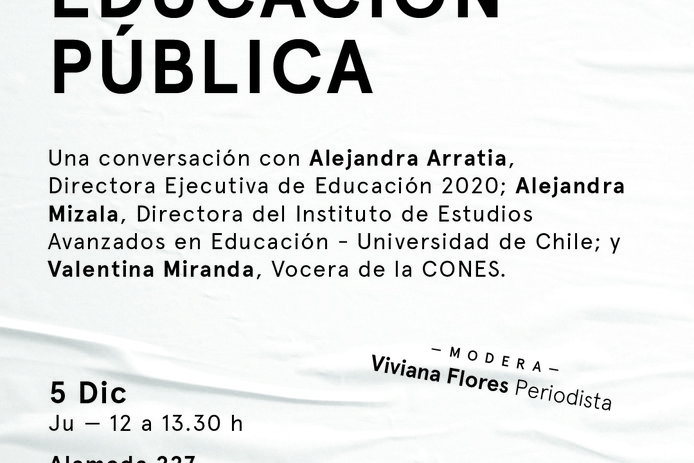2019
GAM Manifesto
In August a collage-like mural was installed on the façade, it was composed by six 150 meters long street-art canvas, with iconic images of citizen movements from different times in Chilean history.
The photomontage, commanded by Gabriela Mistral, fantasizes with great characters of our culture supporting the feminist struggle. The faces of artists connected to GAM, like Isidora Aguirre, Ana González and Pedro Lemebel, march with actresses that have performed here.
This mural was conceived as a moralistic fantasy where these characters, who embraced the struggles of the people, reunite in the middle of the Alameda to protest and express their views on the Chile of today and support the plight of women for equality and respect.
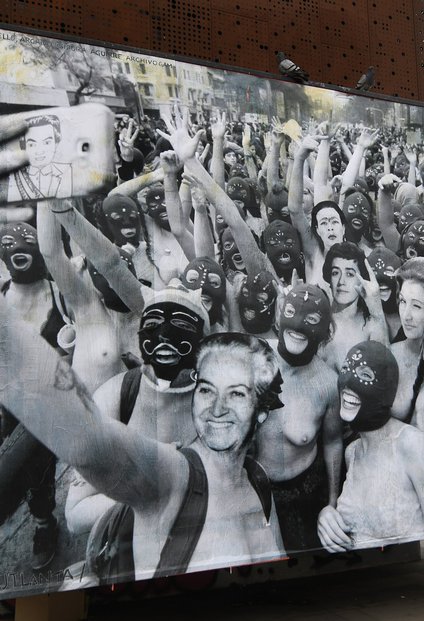
During 2019 a total of 70 protests marched through Alameda before the social explosion of October. These were movements talking about inclusion, gender diversity, feminism, health, pensions, education and other issues. At the same time, GAM was living with the problem of a building constantly graffitied and not money to clean it. Therefore, we came up with a protection campaign connected with the citizens, creating a link between the stage of the theater with the streets.
The campaign tried to create new interactions with public life through a photomontage with content from GAM’s own program and social demands. Quotes by Gabriela Mistral, like “My indigenism made me hateful”, joined messages from the protests taking place outside the building, like “nobody asked how the rapist was dressing” and also extracts from plays been staged inside the building, like “one day the past will make us feel ashamed” from Mistral, Gabriela (1945).
The mural used works from such emblematic photographers as Carlos Wagner, Javier Torres and María Eugenia Lorenzini’s work documenting feminist protests during Augusto Pinochet’s dictatorship. They were joined by Rotmi Enciso, Maglio Pérez, José Parada, Pedro Marinello, Jorge Sánchez, Patricio Mello, Gustavo Milet and Nacho Rojas.
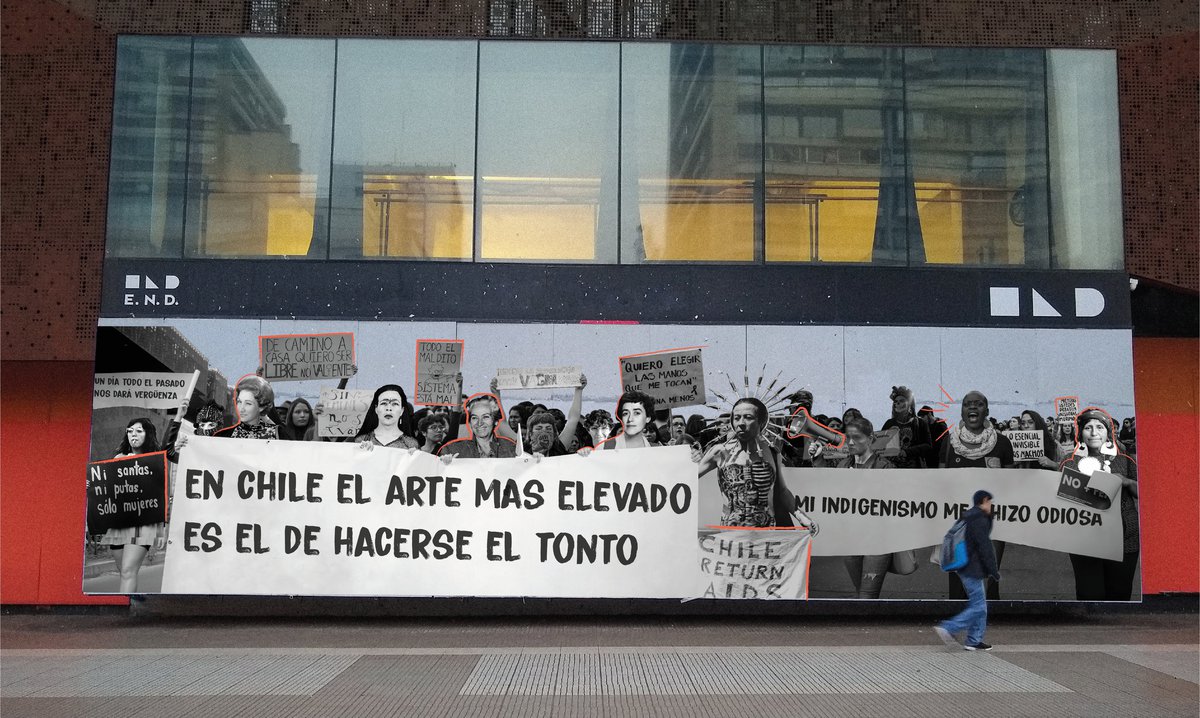
On august 19 we began a pre campaign by making a promotional video with the premise “SOON” where we animated images from the mural that wasn’t finished.
The installation was done that same week, and it remained intact untouched by third parties. We created a video with the installation of the Manifesto, we took photographs and then started a campaign on social media and the press. After that, we got one graffiti about Brazilian feminism and then more and more graffiti that later were recognized as symptoms of the social outburst of October 18.
Even though the mural was taken on October 22 by two people to make barricades, this campaign opened a new space of participative expression on the façade of GAM, where later urban artist would place their works concerning social issues.
#ManifiestoGAM on social media
Around 300,000 thousand people shared photographs and videos of the manifesto on social media. Mostly in Instagram, people started creating selfies and taking pictures of the mural, tagging GAM, using the hashtag or using geolocation.
#ManifiestoGAM in the press
“Mella said: I think that if Gabriela was alive, she’d be happily marching. She was a very contemporary woman, ahead of her time. She spent a long time defending the causes that today are part of the struggle, like gender issues. I think she would’ve been happy to be a part of that mural, and the first to approve it.”
— Emol, 10 sep.
#ManifiestoGAM in New York
The experience of GAM Manifesto was even celebrated abroad. On January 16, 2020, the campaign was presented on ISPA (International Society for the Performing Arts) in New York, a gathering of cultural managers from all over the world to reflect on ideas, experiences and contexts for cultural spaces. The crowd celebrated this creation that reflects a constant dialogue between audiences, the program and social movements.
With a design inspired by the lira popular, we created an image to accompany conversations and forums, one that also served for citizens’activities done on GAM as a open cultural center.
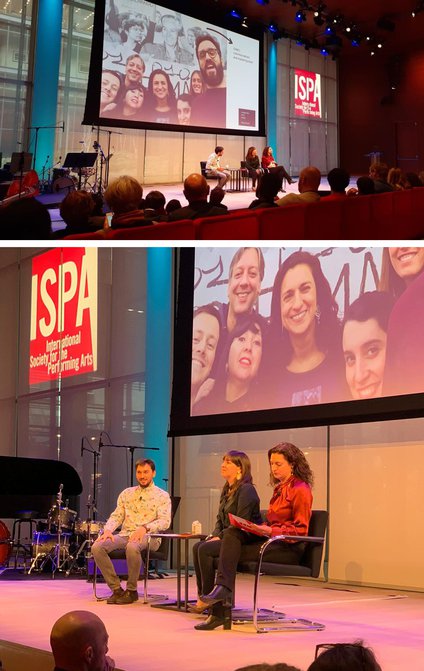
Open Alameda
The social outburst of October 18 implied many issues for GAM: the program was suspended, the building was closed for 11 days and it took time to observe and think what to do with the program and how the communication was done at the time.
On October 30 the building was symbolically reopened with the presence of Coros Ciudadanos, cabildos and special activities connected to the social context. All this new offer was placed under a communicational campaign called #AlamedaAbierta, that positioned GAM as a meeting place for debate and reflection around the main artery conducting people and social protests: Alameda Avenue.
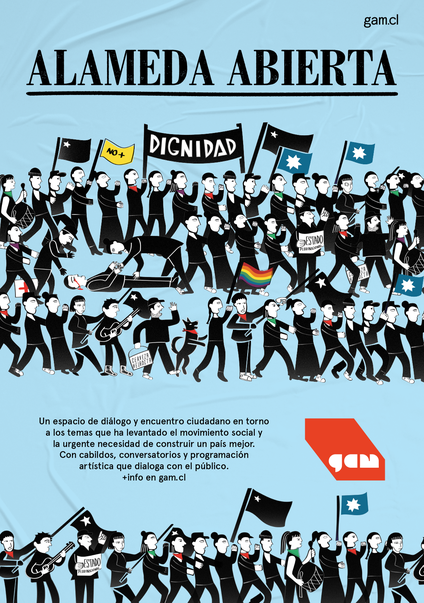
“GAM had to reprogram that month’s usual art offer. We opened our doors and spaces to citizens’ gatherings, we invited the Human Rights Institute to receive denounces and the Red Cross to work from our façade whenever they consider it necessary. We organized talks after every play with social content and, of course, this initiative of seeks to reflect and debate about these pending issues, so necessary to our country.”
— Felipe Mella, GAM’s executive director.
“Plus, the cultural center created Alameda Abierta, a cycle of activities focused on the social context (every Thursday) and art workers cabildos. ‘We will open spaces to understand what’s happening in diverse realities with a renewed gaze,’ announces director Felipe Mella.”
— La Tercera, 23 nov..
Open Alameda in the press


